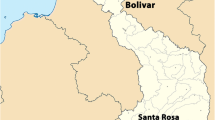Abstract
Spontaneously released merozoites from synchronousPlasmodium falciparum cultures were isolated in the presence of protease blocker. 1–5×1010 merozoites were obtained in each experiment. The isolated merozoites possessed a thick surface coat and about 80% were invasive to human erythrocytes although they did not subsequently develop into ring stages. Tests using several analytical methods showed the merozoite preparations to be free of any erythrocyte contamination. Six labelled proteins were identified after surface radio-iodination, the largest with a molecular weight of 82000. All six proteins were precipitated with various immune sera. Four other proteins with molecular weights of 200000 and 160000–145000 (a triplet) were identified by precipitation with the same immune sera after metabolically labelling the merozoites. The six surface proteins were not prominent in the metabolically labelled preparations. Using these methods it is possible to identify and differentiate between surface and internal merozoite antigens.
Similar content being viewed by others
References
Aikawa M, Miller LH, Johnson J, Rabbege J (1978) Erythrocyte entry by malarial parasites — a moving junction between erythrocyte and parasite. J Cell Biol 77:72–82
Billiault X, Ambroise-Thomas P (1980) Isolation ofPlasmodium falciparum merozoites from cultivated schizonts bound to concanavalin A. Ann Trop Med Parasitol 74:249–250
Boyle DB, March JC, Newbold CJ, Brown KN (1983) Parasite polypeptides lost during schizogony and erythrocyte invasion by the malaria parasitesPlasmodium chabaudi andPlasmodium knowlesi. Molec Biochem Parasitol 7:9–18
Ciejek EM, Nordstrum JL, Tsai M, O'Malley BW (1982) Ribonucleic acid precursors are associated with the chick oviduct nuclear matrix. Biochemistry 21:4945–4953
David PH, Hommel M, Benichon JC, Eisen HA, Pereira Da Silva LH (1978) Isolation of malaria merozoites release ofPlasmodium chabaudi merozoites from schizonts bound to immobilized concanavalin A. Proc Natl Acad Sci 75:5081–5084
Hall R, McBride J, Morgan G, Tait A, Zolg JW, Walliker D, Scaife J (1983) Antigens of the erythrocytic stages of the human malaria parasitePlasmodium falciparum detected by monoclonal antibodies. Molec Biochem Parasitol 7:247–265
Heidrich HG, Mrema JEK, Vander Jagt DL, Reyes P, Rieckmann KH (1982) Isolation of intracellular parasites (Plasmodium falciparum) from culture using free-flow electrophoresis: separation of the free parasites according to stages. J Parasitol 68:443–450
Holder AA, Freemann RR (1982) Biosynthesis and processing of aPlasmodium falciparum schizont antigen recognized by immune serum and a monoclonal antibody. J Exp Med 156:1528–1538
Johnson JG, Epstein N, Schiroiski T, Miller LH (1980) Factors affecting the ability of isolatedPlasmodium knowlesi merozoites to attach to and invade erythrocytes. Parasitology 80:539–550
Jungery M, Boyle D, Patel T, Pasvol G, Weatherall DJ (1983) Lectin-like polypeptides ofP. falciparum bind to red cell sialoglycoproteins. Nature (London) 301:704–705
Laemmli K (1970) Cleavage of structural proteins during the assembly of the head of bacteriophage Tn. Nature (London) 227:680–685
Miller LH, Johnson JF, Schmidt-Ullrich R, Haynes JD, Wallach DFH, Carter R (1980) Determinants on surface proteins ofPlasmodium knowlesi merozoites common toPlasmodium falciparum schizonts. J Exp Med 151:790–798
Mrema JEK, Langreth SG, Jost RC, Rieckmann KH, Heidrich HG (1982)Plasmodium falciparum: isolation and purification of spontaneously released merozoites by nylon membrane sieves. Exp Parasitol 54:285–295
Perkins M (1982) Surface proteins of schizont-infected erythrocytes and merozoites ofPlasmodium falciparum. Molec Biochem Parasitol 5:55–64
Perrin LH, Dayal R (1982) Immunity to asexual erythrocytic stages ofPlasmodium falciparum: role of defined antigens in the humoral response. Immunol Rev 61:245–269
Reese RT, Motyl MR, Hofer-Warbinek R (1981) Reaction of immune sera with components of the human malarial parasite,Plasmodium falciparum. Am J Trop Med Hyg 30:1168–1178
Stanley HA, Langreth SG, Reese RT, Trager W (1982)Plasmodium falciparum merozoites: isolation by density gradient centrifugation using percoll and antigenic analysis. J Parasitol 68:1059–1067
Author information
Authors and Affiliations
Rights and permissions
About this article
Cite this article
Heidrich, HG., Strych, W. & Mrema, J.E.K. Identification of surface and internal antigens from spontaneously releasedPlasmodium falciparum merozoites by radio-iodination and metabolic labelling. Z. Parasitenkd. 69, 715–725 (1983). https://doi.org/10.1007/BF00927421
Accepted:
Issue Date:
DOI: https://doi.org/10.1007/BF00927421




